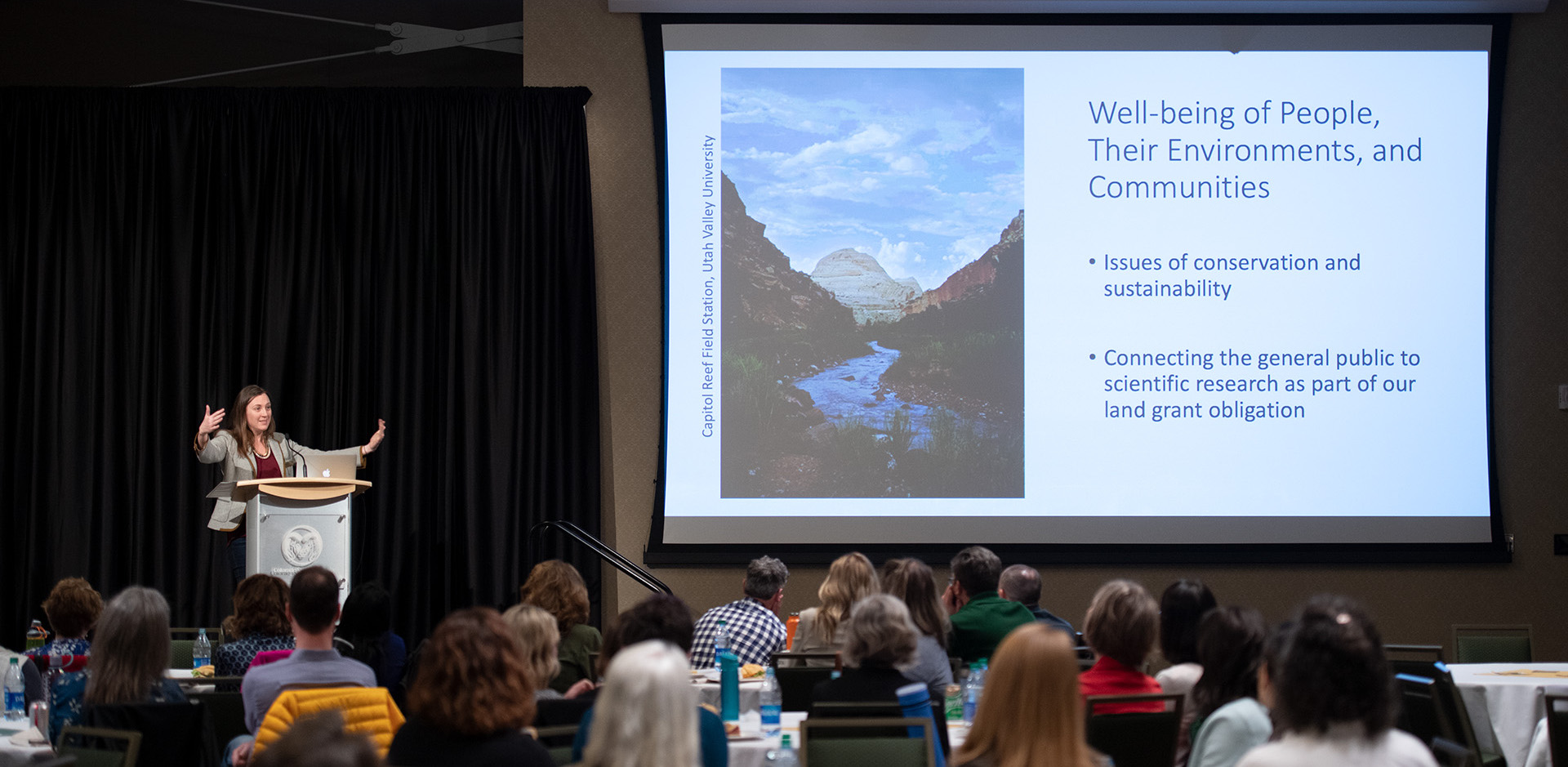
Jill Zarestky speaks at the first annual College of Health and Human Sciences Research Day in March.
A team of researchers at Colorado State University and Texas A&M University recently explored the locations of “informal learning institutions” such as museums and libraries, and the implications for public access to science.
Their research uncovered a lack of such institutions in counties with high poverty or lower populations, finding that certain communities of people, specifically Indigenous populations, are underserved. The findings of this study were recently published in Science Advances, a peer-reviewed, open access scientific journal.
The article contends that availability of informal learning opportunities is critical to ensuring that the general public has access to scientific information. This is especially important for those who might otherwise be historically excluded from STEM (science, technology, engineering and math) education, such as minorities, girls and women.
“Creating informal STEM education opportunities within underserved areas and for underrepresented groups can reduce barriers, promote science literacy, and contribute to better representations in STEM careers,” the article explains.

Missing opportunities to learn
Members of the research team included Assistant Professor Jill Zarestky of CSU’s School of Education and graduate student Lauren Vilen, as well as Rachel Short, Rhonda Struminger and Michelle Lawing of Texas A&M, along with their undergraduate researchers James Pippin and Minna Wong.
Short, the lead author on the study, is currently an NSF Postdoctoral Research Fellow at Texas A&M. Findings from this article were part of Short’s dissertation, which used mammal fossils to inform conservation practices and public understanding of science.
Struminger, Zarestky and Lawing served as the primary investigators on a National Science Foundation – Advancing Informal STEM Learning grant that supported this research.
The project provides insight into the geographic capacity of informal STEM learning institutions to reach underserved populations and facilitate the communication of environmental knowledge to the public.
To achieve this aim, the researchers examined the location of informal learning institutions, or ILIs, which provide learning opportunities that occur outside a standard classroom environment. In the publication, the research team stressed that ILIs, such as zoos and aquariums, museums and science centers, botanical gardens, public libraries, national parks, and biological field stations allow visitors to explore and process STEM-related information.
‘ILI deserts’
The team contends that various barriers, both geographic and those relating to equity and accessibility, like cost of entry, keep many from accessing these informal learning facilities.
In their research, the team mapped the locations of ILIs across the United States, comparing this with population data, measures of poverty, and demographic information relating to race and ethnicity.
Through this analysis, the researchers identified 48 counties across the Great Plains, southeast and northwest where no informal learning institutions exist at all, leaving over 327,000 people without adequate access to informal STEM education.
These ILI deserts disproportionately affect Indigenous and impoverished people, the data suggest. Further exploring this relationship, the team identified that micropolitan areas, those distant from metro areas but having populations of 20,000 or more people, are also underserved by informal learning institutions.
“The three underserved groups of counties include a small percentage of the overall U.S. population but larger percentages of Indigenous populations,” the article states.
Fostering partnerships to broaden participation
Using their findings, the research team provides recommendations for future collaborations to bring ILIs to these geographic regions lacking informal learning opportunities in STEM to broaden participation of underserved populations.
“Libraries, biological field stations and national parks are particularly key types of ILIs in underserved areas,” Zarestky said. “Partnerships among these venues could support new ways to engage the general public with informal STEM learning, which would in turn support science literacy and help attract more diverse populations to STEM careers.”
Short says their research provides foundational evidence that suggests systematic change is necessary before a more inclusive, diverse network of informal learning opportunities in STEM can be achieved.
“We hope that our research can contribute to raising awareness for and addressing the inequities that currently exist in informal STEM learning. Even though proximity does not guarantee access, it is a sizeable barrier to many people,” Short said.